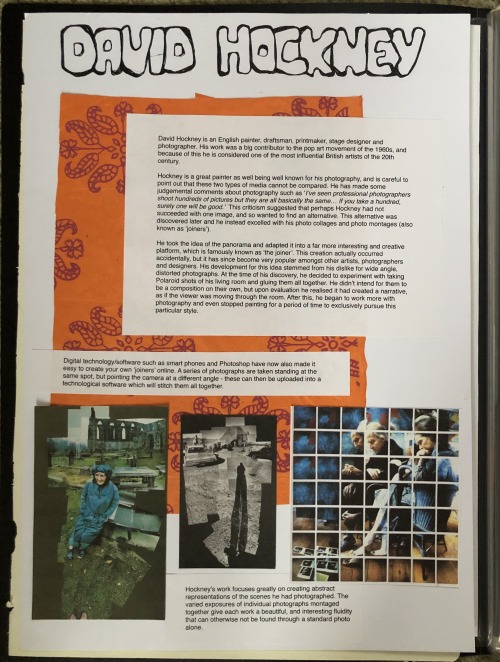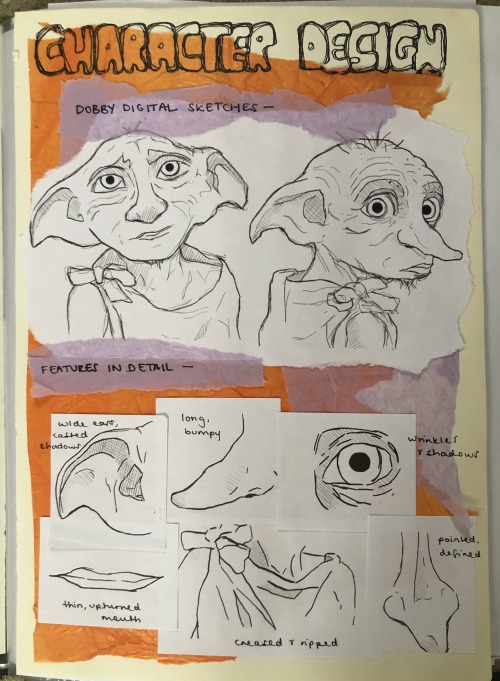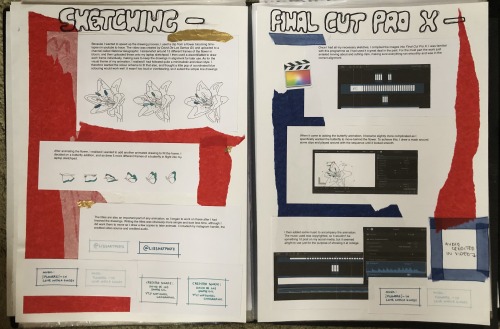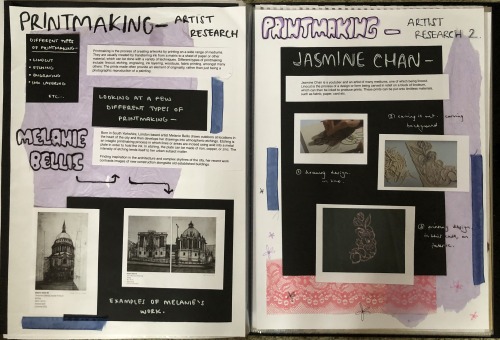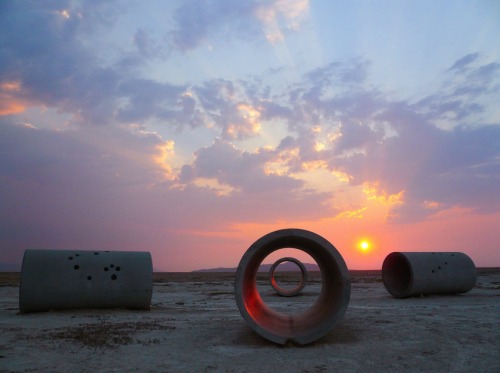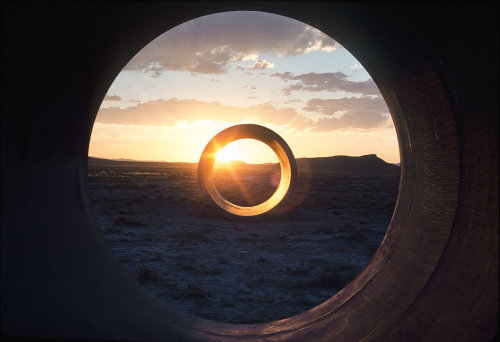#artfoundation
Designing my own dress fabric




To show more of a diverse range of skills, I wanted to create my own design for the dress fabric. At first I wasn’t sure if that going to be achieved through ice-dying or digital design, so I experimented with both. I ended up not liking the ice-dye samples, so went on to experiment with my drawing tablet. I knew I wanted the fabric to display roses and be of a green colour to match the jacket, so I just ran with that!
The fabric bought was from contrado, a delicate silk.





Pocket design for my suit jacket.
It was my first time trying free machine embroidery so there were a few trials that I didn’t end up using / liking. Learning from these, I chose to put daffodils on the pockets as they symbolise change. I was heavily inspired by the work of Mandy Pattullo — reworking old, worn fabrics to create something new and beautiful. I gathered scraps of fabric from the textiles department and layered them together, using bondaweb and stitch to secure in place. (Second pocket is not properly shown but the process was the same).
The only bad thing about the pockets is that all of the fabric made them super heavy! This meant that they pulled the jacket down in a bit of a weird way, but an ironing helped.

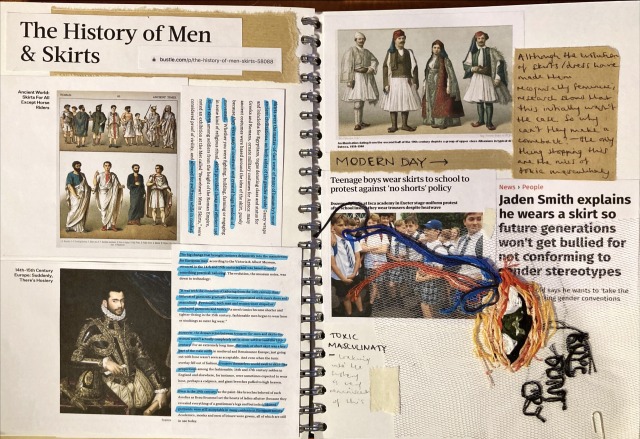




Topic change — I started looking at men’s fashion, particularly “feminine” clothes. This led me to explore more of stereotypically unconventional gender / sexuality norms: straight men in make-up and dress…
From here I started to design my own clothes! The last 3 photos show an evolution from casual to formal wear. I changed my initial ideas as I didn’t feel they were interesting enough for an exhibition OR to convey my message. I felt more confident with the concluded designs of a suit and dress.
Ethics and Moral values in art

Many people love art for the freedom it provides through expression — it is often said that “a picture can paint a thousand words.” With many mediums at an artist’s fingertips, the creative possibilities are endless. Art can be produced around any subject matter, but it is debatable whether some topics shouldn’t be permitted. With such liberty, should there also be moral responsibility?
“Myra” by Marcus Harvey is an interesting example of blurred lines within ethics. This large painting was created in 1995, resembling a greatly magnified version of a photographic image. The woman displayed on the canvas is Myra Hindley (the person held accountable, as well as her husband, for The Moors murders). The victims consisted of five children, which the painting boldly comments on through thousands of tiny handprints, layered to portray one big visual. These small handprints are reminiscent of an “innocent child”, which the artwork consciously juxtaposes through the large canvas portrayal of the “depraved world of adults”.
Understandably, this is a very controversial piece with much to be said about it. Some people support it, describing it as the single most important painting in the show: “a very, very cathartic picture… It is an incredibly serious and sober work of art that needs to be seen.” Others saw it as glorification and were angrily provoked, causing the press and public to comment before the opening of the exhibition: “Myra Hindley is to be hung in the Royal Academy. Sadly it is only a painting of her”.
This is of course only one example, but clearly demonstrates the diversity of thought. Morally dubious artworks have always been, and will always continue to be produced. Due to differing opinions, people will always have dissimilar views regarding what is and isn’t acceptable to be published. Personally, I do believe that it is appropriate for the artist to consider their audience and what they are publishing in the world. There is a fine line between art that handles a sensitive subject matter to spread awareness, or to just glorify and promote disturbing matters. Ultimately, an artist is still a human being and a part of the social, moral world. This would therefore suggest that actions as either an artist or ordinary human is not to be exempt from following the same guidelines or moral scrutiny.
[ Sources:
-https://en.wikipedia.org/wiki/Myra_(painting)
-https://en.wikipedia.org/wiki/Moors_murders]



A close-up view of the jellyfish embroidery I was working on a few weeks ago when exploring ‘nature’ as a theme.
Art History #11 — Female Identity // 22.12.20
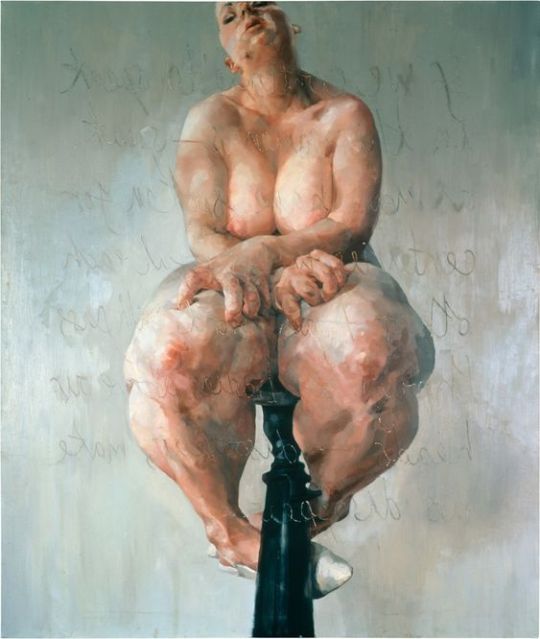
Proppedis a superlative self-portrait by Jenny Saville, first displayed at her degree show in Edinburgh in May, 1992. The painting displays an exposed woman adjusted on a high stool in front of a mirror, with the words “If we continue to speak in this sameness — speak as men have spoken for centuries, we will fail each other” facing towards her. The combination of vulnerability, independence and message within this portrait demonstrates Saville’s intention to diminish several propositions: society’s toxic beauty standards, sexist ideals, and the relentless male convention of female nudity (with a specific focus on cultural aversion to corpulence).
In the artist’s words, “I’m interested in the power a large female body has – a body that occupies a lot of physical space, but also someone who’s acutely aware that our contemporary culture encourages her to disguise her bulk and look as small as possible”, her paintings present the viewer with a dichotomy; there is an intense sense of vulnerability that permeates Saville’s subjects, and yet their large size belies this impression of fragility. The portrait is ultimately painted in such a way to counteract these stubborn stereotypes and ideals — Saville is successfully able to promote inclusitivioty and interrogate prescribed notions of beauty. Additionally, for a young woman, at the time, to insert herself into the male canon of nude paintings was highly audacious. It was extremely rare for women to paint the female nude with such candour, and they instead simply painted their subjects clothes. Saville’s intentions of carving out a space for herself in a very male dominated field is clear, especially since the primary subject in early works is herself — there is significance to this choice. Her work, therefore, would not only have been influential through its inherent message of body acceptance, but also due to her bold denial of sexist rules. She reinvented society’s expectations in several ways, and in doing so suggested a more feminist, fair viewpoint.
Sources:
- Art History lesson notes.
- https://www.sothebys.com/en/articles/the-groundbreaking-self-portrait-that-launched-jenny-savilles-career
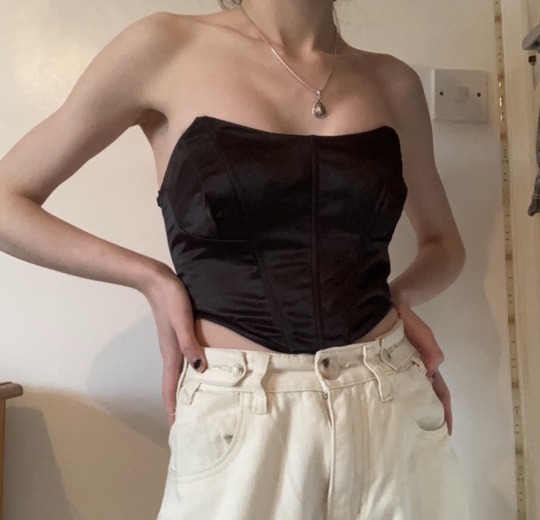

“HOW I DRESS DOES NOT MEAN YES”
A corset and jumper I made for my pathway project “Then And Now” — (Planning to later use photos for a poster).
Initially, I started looking at how fashion had changed through the ages, but the general history involved within this research inspired me to explore some more feminist movements. I then researched sexual assault cases and the artistic response to them, (one of which being very eye-opening to an often close-minded audience: https://www.boredpanda.com/what-were-you-wearing-sexual-assault-art-exhibition/?utm_source=google&utm_medium=organic&utm_campaign=organic)
This motivated me to make two items of clothing: a tighter fitting, modern corset, as well as a baggy, oversized jumper. Through my work I want to demonstrate how no matter what anyone wears— either gender, they are not asking for “it”.

“Do Women Have To Be Naked To Get Into the Met. Museum?” is a poster created by the Guerrilla Girls in 1989. They are a group of anonymous, female artists who are known for their devotion to fighting sexism and racism within the art world. This particular poster is a feminist social commentary and critique that was provoked by the International Survey of Painting and Sculpture exhibition, held in 1984 at the Museum of Modern Art, New York. This exhibition included the work of 169 artists, less than 10% of whom were women. Although female artists had played a central role in experimental American art of the 1970s, their presence in museum and gallery exhibitions were diminished dramatically. This prejudice therefore inspired the Guerrilla Girls to speak out in an artistic way, that targeted everyone they felt actively responsible for the exclusion of women and non-white artists from mainstream exhibitions and publications.
The poster itself displays an image of a partially censored naked lady, commenting on the still prevalent patriarchal times of society. It comments largely on the woman’s worth, presenting her to be seen in a sexualised light by civilisation, but then also highlighting the stupidity of this through the witty and sarcastic title. Although displayed to be very bare, the woman is still able to keep her identity hidden through the Gorilla mask, reflecting also on the artists’ own anonymity. Combining bold block text with lists and statistics allowed for the Girls to appropriate the visual language of advertising and have it actually be recognised by the public in the streets. Through the means of displaying social commentary within art in a still very sexist world, the Guerrilla Girls were able to influence minds and fulfil their responsibility of reaching a wider audience. Their use of wit and irony to point a critical finger at double standards prevalent in the art world and elsewhere was, and still is, a very important motive to help make a change.

Kara Walker is an American artist who explores race, gender, sexuality, violence and identity in her work. She is best known for her large scale tableaux of black cut paper-silhouettes, which expose the viewer to the issues of prejudice. ‘Slavery! Slavery!’ is an example of this work, created in the year 2000. Through many displayed qualities such as colour contrast, the simple narrative, layout and exaggeration, Walker provides a strong critique of the plantation culture. What initially looks like a historical instillation is later dismissed upon closer scrutiny, as the shadow figures are shown to be revelling in all kinds of erotic, sadistic and masochistic acts. This portrayal of the design is executed in a way that emphasises Walker’s sharp sense of wit and humour, yet still addresses the history and identity with a powerful directness. Through the use of largely stereotypical and exaggerated designs, Walker is able to challenge this notion of prejudice and effectively display the horrors of it.
[ Sources:
- Art History lesson notes.
- https://www.tate.org.uk/art/artists/kara-walker-2674
- https://en.wikipedia.org/wiki/Kara_Walker
-https://walkerart.org/collections/artists/kara-walker ]

During the 16th century, the separation of different genres within the art world was very prominent. They were considered to be ranked in order of importance, being: History, Portrait, Genre, LandscapeandStill life. History paintings were viewed as the most significant due to their narrative subject matter rather than artistic style, whereas the Landscape genre was considered less important as it did not include the same notion of depicting a moment in a factual story.
However, the 19th century saw a remarkable explosion of naturalistic landscape painting, and this was when it began to rise in popularity and significance. Flatford Mill byJohn Constable is a perfect example that displays this beauty of landscape paintings, and why it became better recognised. The painting displays a scenic countryside from Constable’s childhood spent in Suffolk, with intricate details shown, such as the boy and the horse. A large canvas was used which created an even more virtual and atmospheric scene, reflecting largely on the landscape itself and feeling almost convincing enough to be real. Due to this noteworthy execution amongst other qualities, it is unsurprising that landscape art has grown in regards to recognition. Whether this was due to the belief that nature is a direct manifestation of God, the increasing alienation of people from nature by growing industrialisation and urbanisation in the 19th century, or just simply the media’s influence over time — it is still a big, ever-growing art form within the 21st century. Landscape art became the vehicle for a revolution in Western painting, and so the traditional hierarchy of the genres collapsed.
[ Sources:
- https://www.tate.org.uk/art/artworks/constable-flatford-mill-scene-on-a-navigable-river-n01273
- Art History lesson notes. ]
Art History #7 — Land Art // 23/11/20.
‘Sun Tunnels’ is a land artwork created by Nancy Holt. It is composed of four giant, cylindrical, concrete structures formatted in a cross shape on the desert’s floor. The structure allows enough space for a viewer to walk inside without ducking, intended to provide an interactive element to the land art. The work’s orientation and form are precisely aligned to enable the four tubes to frame the sun on the horizon during the summer and winter solstices, producing a lens that can engulf the body. The small holes in the tubes are modelled on the position of four constellations, and they throw scattered discs of light onto the viewer inside. After completion of the work, Holt did not want to linger on the sun tunnels alone when presenting it to the public, rather she had a motivation to guide the viewers through the land. She stated that “Choosing these sites as places for people to experience and see, that’s the work”. This extended engagement with the land led her to the conclusion that sculptural frameworks were unnecessary, and that the sites werethe piece. Holt’s meaning behind her land art was to therefore create something that complements and emphasises the natural beauty of the environment itself — building upon this is most effective.
[ Sourced references:
— https://www.artsy.net/article/artsy-editorial-story-sun-tunnels-nancy-holts-land-art-masterpiece
— Art History lesson notes. ]
Post link

